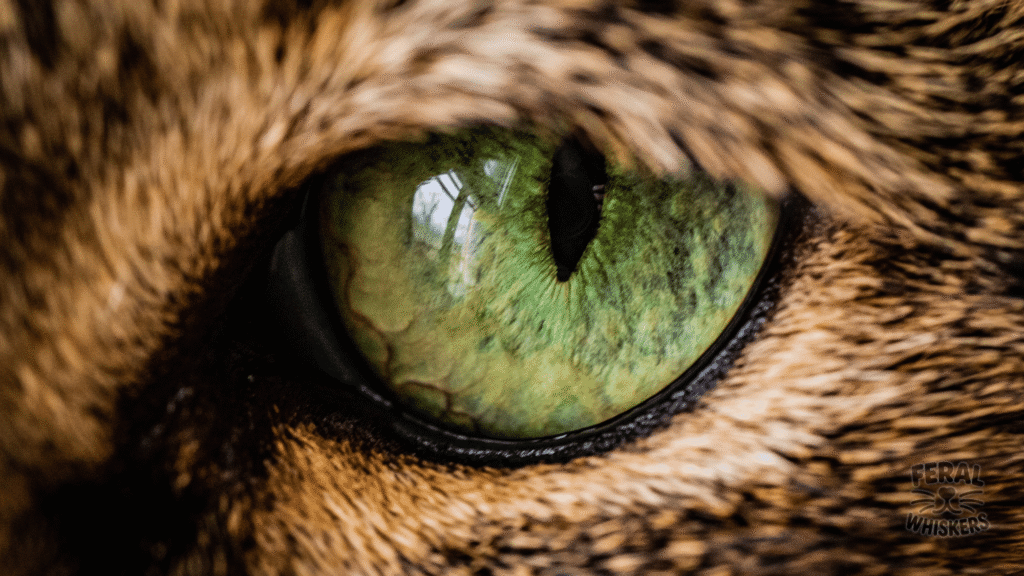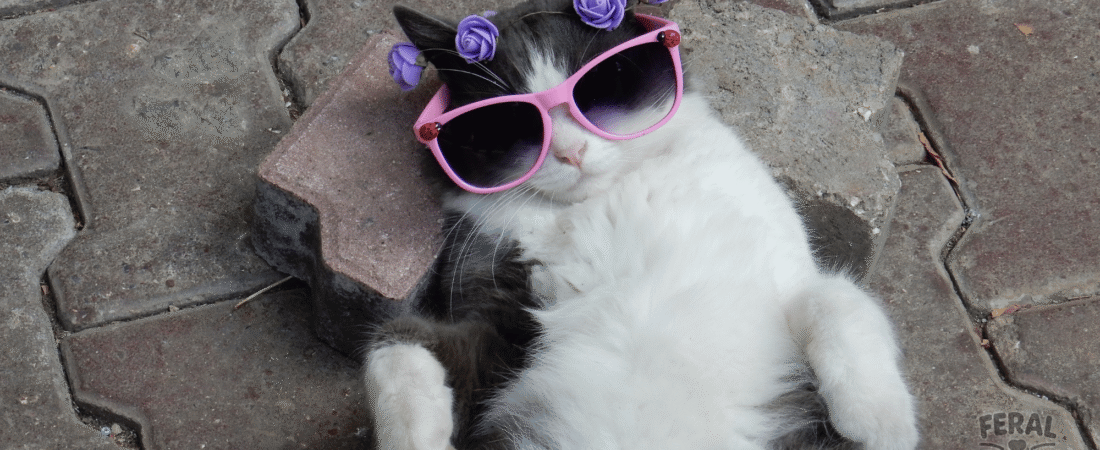📌 Windows Into a Cat’s World

A cat’s eyes are often the first thing we notice — wide, unblinking, glowing in the dark like tiny lanterns. But their beauty is only the beginning: cat eyes are highly specialized survival tools. From night vision to a 200‑degree field of view, these eyes reveal why cats are such effective hunters.
Let’s dive into some eye‑opening fun facts about feline vision!
🦠 Fun Facts About Cat Eyes
1. Cats See Better in the Dark Than Humans 🌙
Cats have a layer of reflective cells behind their retina called the tapetum lucidum. This acts like natural night-vision goggles, reflecting light back through the retina to amplify it. That’s why their eyes glow in the dark — and why cats see in light levels six times lower than humans.
2. Their Eyes “Glow” Because of the Tapetum ✨
That eerie glow isn’t magic — it’s reflection! The tapetum lucidum not only boosts vision but gives cats their iconic glowing eyes in photos and headlight beams.
3. Cats Don’t See All Colors 😼🌈
While humans are trichromatic (red, blue, green cones), cats are dichromatic, meaning they primarily see shades of blue and green. Reds appear more muted — closer to browns and grays. They’re not color‑blind, but their palette is limited compared to ours.
4. Cats Have a Wider Field of Vision 📐
Humans have about a 180° field of vision. Cats stretch to around 200°, thanks to forward-facing but slightly wider-set eyes. This allows them to scan more area during hunts — spotting movement we may miss.
5. Cats Are Motion-Detection Experts 👀➡️
They may not perceive fine details like we do (human vision is sharper), but cats can detect even the slightest movement at distance. This gave them a survival edge as ambush predators.
6. Pupil Shapes Reveal Mood & Function ⚡
- Vertical slits in bright light = control glare & highlight focus.
- Wide, round pupils = excitement, fear, or play drive.
- Narrow pupils = irritation or defensive tension.
Your cat’s pupils are like an emotional barometer!
7. Cats Blink Slowly as a Sign of Love ❤️
We’ve covered this in communication — slow blinking = “cat kisses.” If your cat blinks softly at you, return it. It’s one of the sweetest bonding gestures.
8. Third Eyelid = Secret Cat Shield 🛡️
Cats have an extra eyelid called the nictitating membrane, which sweeps across to keep eyes moist and remove debris. It’s usually invisible, but if visible too often, it can signal illness or exhaustion.
9. Kittens Are All Born With Blue Eyes 👶💎
At birth, kittens’ eyes appear blue due to lack of melanin. True adult eye color develops around 6–12 weeks, ranging from amber to green to gold.
10. A Cat’s Stare Can Be Protective or Demanding 👁️👁️
Cats often stare to monitor you — part curiosity, part “colony watch.” Sometimes it’s protective… but often it’s just their way of saying, “You forgot about the food bowl again, didn’t you?”
🚨 Health Facts About Cat Eyes
- Dilated pupils all the time: Could mean high blood pressure or hyperthyroidism.
- Cloudy eyes: May indicate cataracts, trauma, or infection.
- Persistent discharge or third eyelid showing: Vet visit needed.
❓ FAQs
Q1: Can cats see in complete darkness?
No — they still need trace amounts of light. But they see far better than we can in dim conditions.
Q2: Do cats recognize faces?
Yes, but not primarily by eyes. Cats rely more on scent and voice recognition than visual details.
Q3: Why do cats stare without blinking?
It’s not always creepy! Sometimes it’s curiosity, sometimes dominance. Context matters — look at ears, tails, whiskers too.
💡 Final Thoughts
Cat eyes are not just mesmerizing to look at — they’re marvels of evolution. With night vision, wide fields, and subtle emotional expressions, your cat’s world is painted differently than yours — filled with muted shades, heightened motion, and an ever-alert sense for survival.
✅ Key takeaway: When your cat’s eyes meet yours, you’re not just looking at beauty — you’re peering into one of nature’s most finely tuned predator tools.

